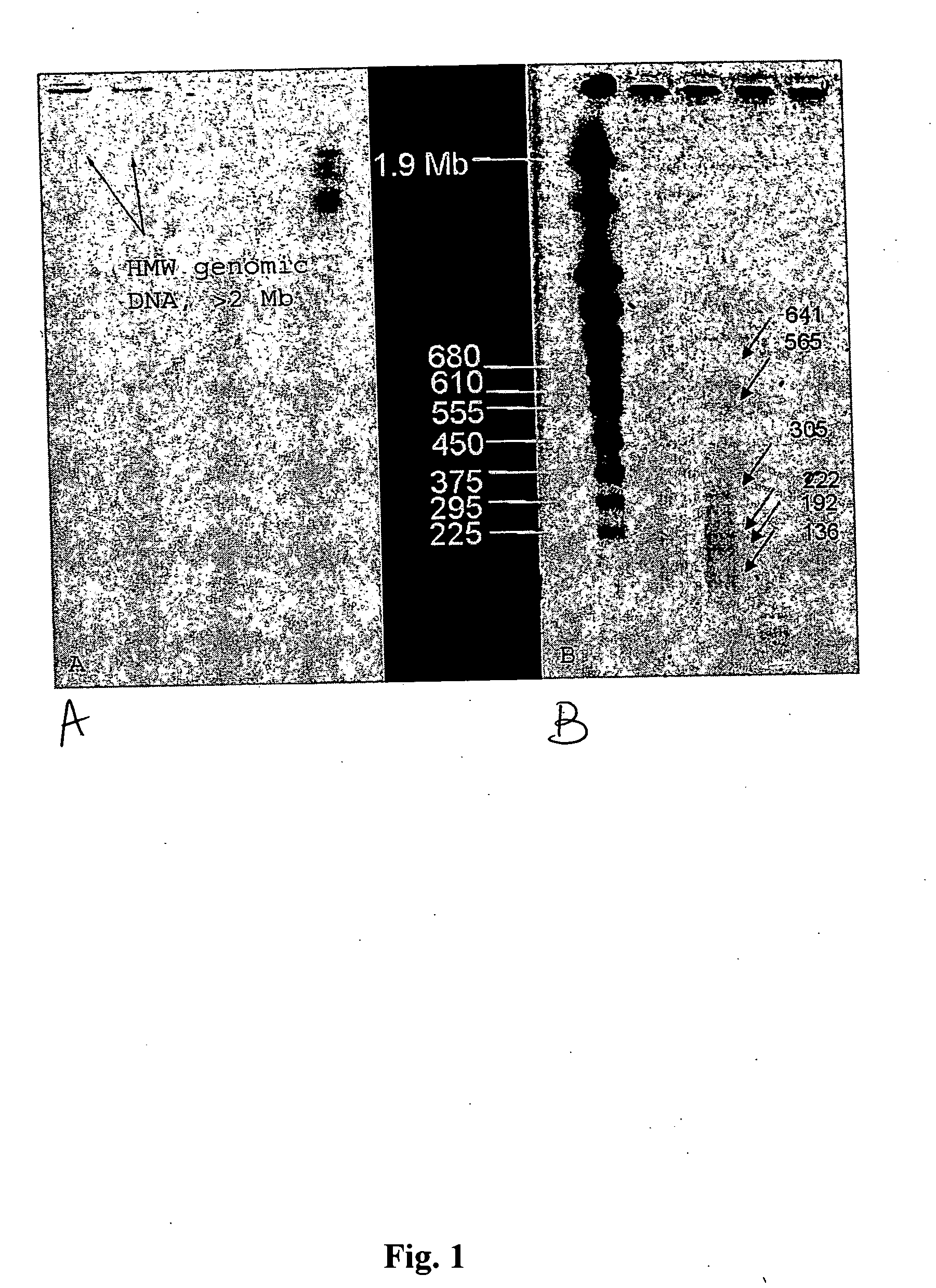Methods for isolation of nucleic acids from prokaryotic spores
- Summary
- Abstract
- Description
- Claims
- Application Information
AI Technical Summary
Benefits of technology
Problems solved by technology
Method used
Image
Examples
example 1
Method for Isolating HMW Genomic DNA from Prokaryotic Spores
[0111] 108 spores were resuspended in 100 μl spore decoating solution (8M urea, 1% SDS, 50 mM Tris, 10 mM EDTA, 2% β-mercaptoethanol, pH 10). The spores were incubated at 90° C. for 5 minutes, spun down and resuspended in 1 ml wash solution (5 mM Tris, 5 mM EDTA, 0.05% Tween 20, 0.05% Triton-X-100, pH 8). The spores were washed three times, gently pelleted and then resuspended in 100 μl of a first lysing buffer (10×wash solution, pH 8). Lysozyme was added to a final concentration of 2 mg / ml. PlyG lysin can be used at a final concentration of 10 U / ml, for example, for B. anthracis spores. The mixture was incubated in a 37° C. water bath for 60 minutes, or until spores were phase dark in a phase contrast microscope, with minimal agitation. The mixture was then spun, the supernatant was removed, and the pellets were resuspended in a second lysis solution (6 M urea, 2% β-mercaptoethanol (or DTT), 1% N-lauryl sarcosine, 10 mM E...
PUM
| Property | Measurement | Unit |
|---|---|---|
| Temperature | aaaaa | aaaaa |
| Time | aaaaa | aaaaa |
| Basicity | aaaaa | aaaaa |
Abstract
Description
Claims
Application Information
 Login to View More
Login to View More - R&D
- Intellectual Property
- Life Sciences
- Materials
- Tech Scout
- Unparalleled Data Quality
- Higher Quality Content
- 60% Fewer Hallucinations
Browse by: Latest US Patents, China's latest patents, Technical Efficacy Thesaurus, Application Domain, Technology Topic, Popular Technical Reports.
© 2025 PatSnap. All rights reserved.Legal|Privacy policy|Modern Slavery Act Transparency Statement|Sitemap|About US| Contact US: help@patsnap.com


